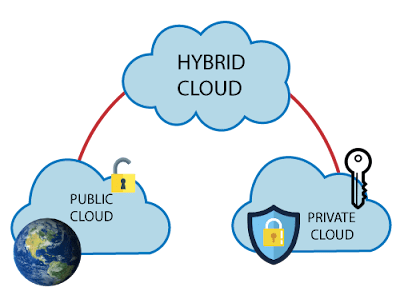A Hybrid Cloud combines both public and Private Clouds, allowing you to run your applications in the most appropriate location.
Hybrid Cloud type has the following characteristics
Resource location - Specific resources run or are used in a Public Cloud, and others run or are used in a Private Cloud.
Cost and efficiency - Hybrid Cloud models allow an organization to leverage some of the benefits of cost, efficiency, and scale that are available with a Public Cloud model.
Control - Organizations retain management control in Private Clouds.
Skills - Technical skills are still required to maintain the Private Cloud and ensure both cloud models can operate together.
Hybrid Cloud scenarios can be useful when organizations have some things that cannot be put in a Public Cloud, possibly for legal reasons. For example, you may have medical data that cannot be exposed publicly.
Another example is one or more applications that run on old hardware that can’t be updated. In this case, you can keep the old system running locally in your Private Cloud and connect it to the Public Cloud for authorization or storage.
Hybrid Cloud Disadvantages
Upfront CapEx - front CapEx is still required before organizations can leverage a Private Cloud.
Costs - Purchasing and maintaining a Private Cloud to use alongside the Public Cloud can be more expensive than selecting a single deployment type.
Skills - Deep technical skills are still required to be able to set up a Private Cloud.
Ease of Management - Organizations need to ensure there are clear guidelines to avoid confusion, complications or misuse.



